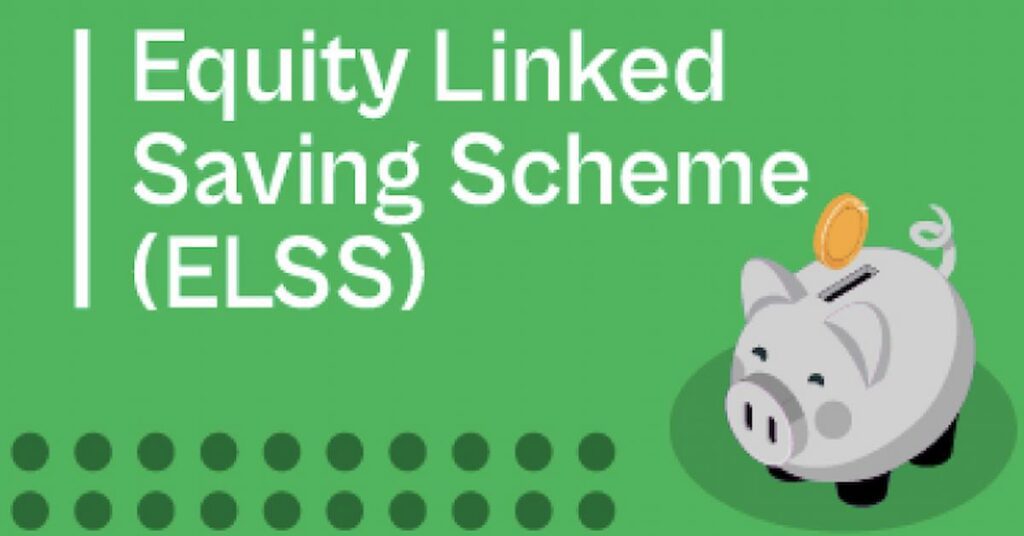ELSS (Equity Linked Savings Scheme)
- ELSS is an acronym for Equity Linked Savings Scheme.
- Equity Linked Savings Scheme is an open-ended equity mutual fund. Up to 80% of the fund generated is invested in equity and equity-related instruments. The remaining 20% of the money pool can be invested in debt or other instruments.


How is ELSS different from regular mutual funds?
The returns on regular mutual funds are taxed normally according to the tax slabs in India. However, ELSS(Equity Linked Savings Scheme) is special. ELSS is such a mutual fund category upon which the Income Tax Act, of 1961, allows a tax benefit under Section 80C. If you invested in ELSS as a part of investments under Section 80C, you could claim deductions up to Rs.1,50,000.
Trends
An investor always seeks to max out his investments, get better returns, and if available, save taxes upon them. This is the reason why people have been flocking to ELSS as a tax-saver in recent times. The reduced stigma around mutual funds has also acted as a catalyst in people adopting ELSS (Equity Linked Savings Scheme) as a tax-saving investment option.
Characteristics of ELSS
- You can get a tax benefit on your investment in ELSS as per Section 80C of the Income Tax Act.
- The return on ELSS up to Rs.1,00,000 is also exempted from taxation. However, any return over the ceiling of Rs.1,00,000 is liable for tax charges at the rate of 10%.
- The minimum lock-in period for ELSS is 3 years. You cannot redeem your mutual fund before that. There is no maximum period. You can keep your money invested for however long you want.
- True to its name, Equity Linked Savings Scheme is an equity-heavy fund.
- Being a mutual fund, ELSS does not promise fixed returns.
- The ELSS fund is invested in equity in a diversified manner, among different industries and different market capitalizations like large-cap, small-cap, or mid-cap.
- Investors need to have a risk-reward mindset to be able to stick to this.
IMPORTANT TAX BENEFITS
- A total tax deduction on Rs.1,50,000 can be claimed from investment in ELSS under Section-80C.
- The interest earned to the tune of Rs.1,00,000 on ELSS is also exempted from taxation. However, any interest earned over and above Rs.1,00,000 shall be charged for taxes at the rate of 10%. These are the important tax benefits as given above.
WAYS OF INVESTING IN ELSS
- LUMP-SUM PAYMENT- You can invest in ELSS at once.
- SIP – You can make monthly SIPs towards the ELSS fund. You would not be hurting your pocket in one go but would be spreading the expense throughout the year. ELSS allows investors to start with a SIP of as low as 500 rupees. This encourages all classes of people to invest in ELSS and claim the tax benefit.
Start your reading goal right here and also educate yourselves in the technical aspects. We have a tailored piece of content to make you feel at ease. Visit our article page- Calanjiyam Blog
Learn to code or start your career in programming with online coding and programming courses. Visit our courses page-.Calanjiyam Courses
Calanjiyam Consultancies and Technologies.
FAQs
Why should you invest in ELSS?
An equity-linked savings scheme or ELSS is a duty-saving investment under Section 80C of the Income Tax Act, 1961. By investing in ELSS, you can claim a duty rebate of over Rs a time and save up to Rs 46,800 a time in levies. An ELSS is the only kind of collective fund eligible for duty benefits under Section 80C.
What are the disadvantages of ELSS?
Disadvantages of ELSS finances:
1) Advanced threat. The threat is also advanced since ELSS finances are directly linked to the equity request.
2) ELSS Liquidity. ELSS collective finances offer limited liquidity.
3) Not an option for threat-antipathetic investors.
4) Limited benefits.
5) Operation cost.
